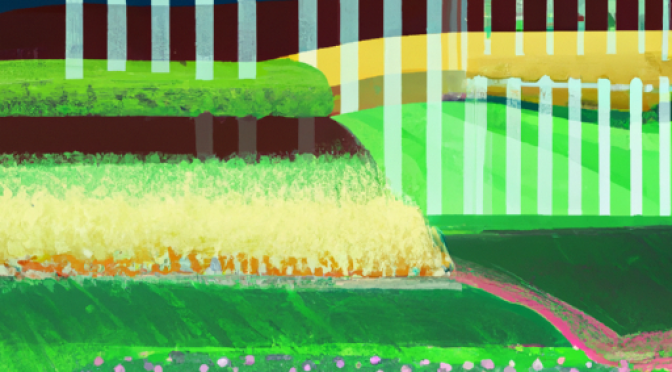Introduction
large-scale-aquaculture/" target="_blank">Large-scale vertical farming has gained significant attention in recent years due to its potential to address food security and sustainability challenges. However, it is crucial to assess and mitigate the environmental impact associated with this agricultural practice. Artificial Intelligence (AI) can play a vital role in forecasting and managing the environmental consequences of vertical farming. This article explores the various ways in which AI can assist in this process.
1. Data Analysis and Modeling
AI algorithms can analyze vast amounts of data collected from vertical farms, including climate conditions, energy consumption, water usage, and waste management. By processing this data, AI can identify patterns and correlations that humans may overlook. This analysis enables the creation of accurate predictive models that forecast the environmental impact of large-scale vertical farming operations.
2. Optimization of Resource Allocation
AI can optimize resource allocation in vertical farms by continuously monitoring and adjusting variables such as lighting, temperature, humidity, and nutrient levels. By analyzing real-time data, AI algorithms can determine the most efficient use of resources, minimizing waste and reducing the environmental footprint of vertical farming.
3. Disease and Pest Detection
AI-powered image recognition and machine learning algorithms can detect diseases and pests in crops at an early stage. By analyzing images of plants, AI can identify signs of distress or infestation, allowing farmers to take immediate action. This early detection helps prevent the spread of diseases and reduces the need for chemical interventions, thus minimizing the environmental impact.
4. Energy Optimization
AI can optimize energy usage in vertical farms by analyzing energy consumption patterns and identifying areas for improvement. By adjusting lighting schedules and optimizing HVAC systems, AI algorithms can reduce energy waste and lower the carbon footprint associated with vertical farming operations.
5. Predictive Maintenance
AI can predict equipment failures and maintenance needs in vertical farms by analyzing sensor data and historical performance. By identifying potential issues in advance, AI enables proactive maintenance, reducing downtime and preventing environmental damage caused by equipment malfunctions.
Conclusion
AI offers significant potential in forecasting and managing the environmental impact of large-scale vertical farming. By leveraging AI algorithms for data analysis, resource optimization, disease detection, energy management, and predictive maintenance, vertical farms can minimize their ecological footprint and contribute to a more sustainable future.

